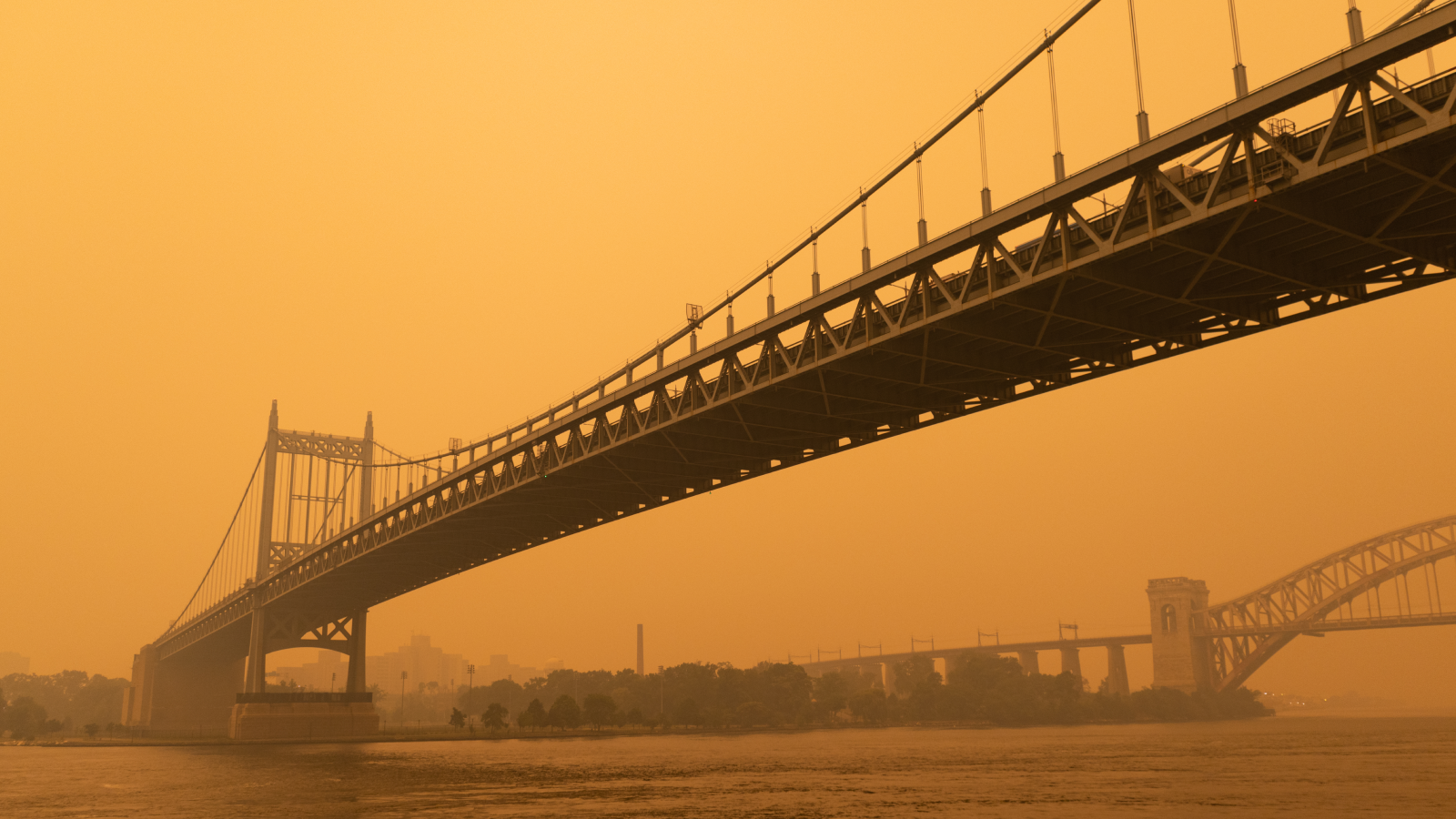Deaths resulting from exposure to wildfire smoke could cost the U.S. economy more by 2050 than all other climate-related harms combined, a new study suggests.
Wildfire smoke pollution is estimated to have caused 41,380 excess deaths per year between 2011 and 2020, and this number could increase by more than 70% to 71,420 over the next 25 years due to the impacts of climate change, scientists have found.
This sum exceeds the estimated cost of all other climate-driven damage combined, including impacts like agricultural losses, storm damage and temperature-related deaths, according to a statement from Stanford University’s School of Sustainability.
“There’s a broad understanding that wildfire activity and wildfire smoke exposure are changing quickly,” senior study author Marshall Burke, a professor of environmental social sciences at Stanford University, said in the statement. “This is a lived experience, unfortunately, for folks on the West Coast over the last decade and folks on the East Coast in the last few years. Our paper puts some numbers on what that change in exposure means for health outcomes, both now and in the future as the climate warms.”
Wildfires are becoming more frequent and extreme due to global warming, because rising temperatures decrease soil moisture and dehydrate plants, making them more flammable and easier to ignite with flying embers. Once a wildfire starts, a combination of dry vegetation and warm air facilitates the spread and makes the fire harder to put out, according to the Center for Climate and Energy Solutions.
Climate change and wildfires form a feedback loop where more wildfires trigger more warming due to the greenhouse gases that are released by burning organic matter, and more warming, in turn, triggers more wildfires. But wildfires also pump other pollutants into the atmosphere, including tiny particles of dust and soot that can penetrate the lungs and bloodstream.
These particles, known as PM2.5, are about 28 times smaller than the width of a human hair and can become trapped in the linings of the mouth, nose and eyes. In the short term, this can cause irritation, coughing, burning sensations and skin condition flare-ups, Live Science previously reported.
If a person inhales these particles into their lungs, they can aggravate existing respiratory conditions, such as asthma and chronic obstructive pulmonary disease (COPD). And if particles enter the bloodstream, they can irritate the heart, thus increasing the risk of heart attack and coronary heart disease.
To work out the human and economic costs of wildfire smoke exposure, the authors of the new study analyzed county-level death records for the entire U.S. between 2006 and 2019. They combined these records with measurements of ground-level smoke emissions and wind, using machine learning to model the movement of PM2.5 from wildfires across North America.
“What we see, and this is consistent with what others find, is a nationwide increase in wildfire smoke,” study lead author Minghao Qiu, an assistant professor in the School of Marine and Atmospheric Sciences at Stony Brook University, said in the statement. “There are larger increases on the West Coast, but there’s also long-range transport of wildfire smoke across the country, including massive recent smoke events in the Eastern and Midwestern U.S. from Canadian fires,” said Qiu, who worked on this analysis as a postdoctoral researcher in Burke’s lab.
Then, the researchers looked at historical mortality and smoke concentration data, which informed their design of climate models to predict the impact of increased wildfire smoke exposure on human health through 2050.
Their results, published Sept. 18 in the journal Nature, indicated that climate change could cause an additional 30,000 deaths per year in the U.S. by 2050 through a rise in pollution from wildfires.
Due to the typical location of wildfires and the way smoke travels with wind, most of these deaths are likely to occur in California, which showed an additional 5,060 deaths per year, according to the statement. New York, Washington, Texas and Pennsylvania could also see a spike in mortality, with models projecting that each of these states will see an additional 1,600 excess deaths from wildfire smoke by 2050.
The models in the study assumed that the world will warm by 3.6 F, but wildfire-smoke-related deaths will probably jump to 60,000 per year by 2050 even if temperatures stay below that threshold, according to the statement. Still, the only way to prevent tens of thousands of deaths is to curb carbon emissions immediately, the researchers said.
Other ways people can manage their exposure to wildfire smoke include indoor air filtration systems and authorized, controlled burns to help reduce the severity of blazes, according to the statement.
“Our understanding of who is vulnerable to this exposure is much broader than we thought,” Burke said. “It’s pregnant people, it’s kids in schools, it’s anyone with asthma, it’s people with cancer. We look at one specific health outcome in this study — mortality — and unfortunately find a shared burden of exposure for individuals across the U.S.”
